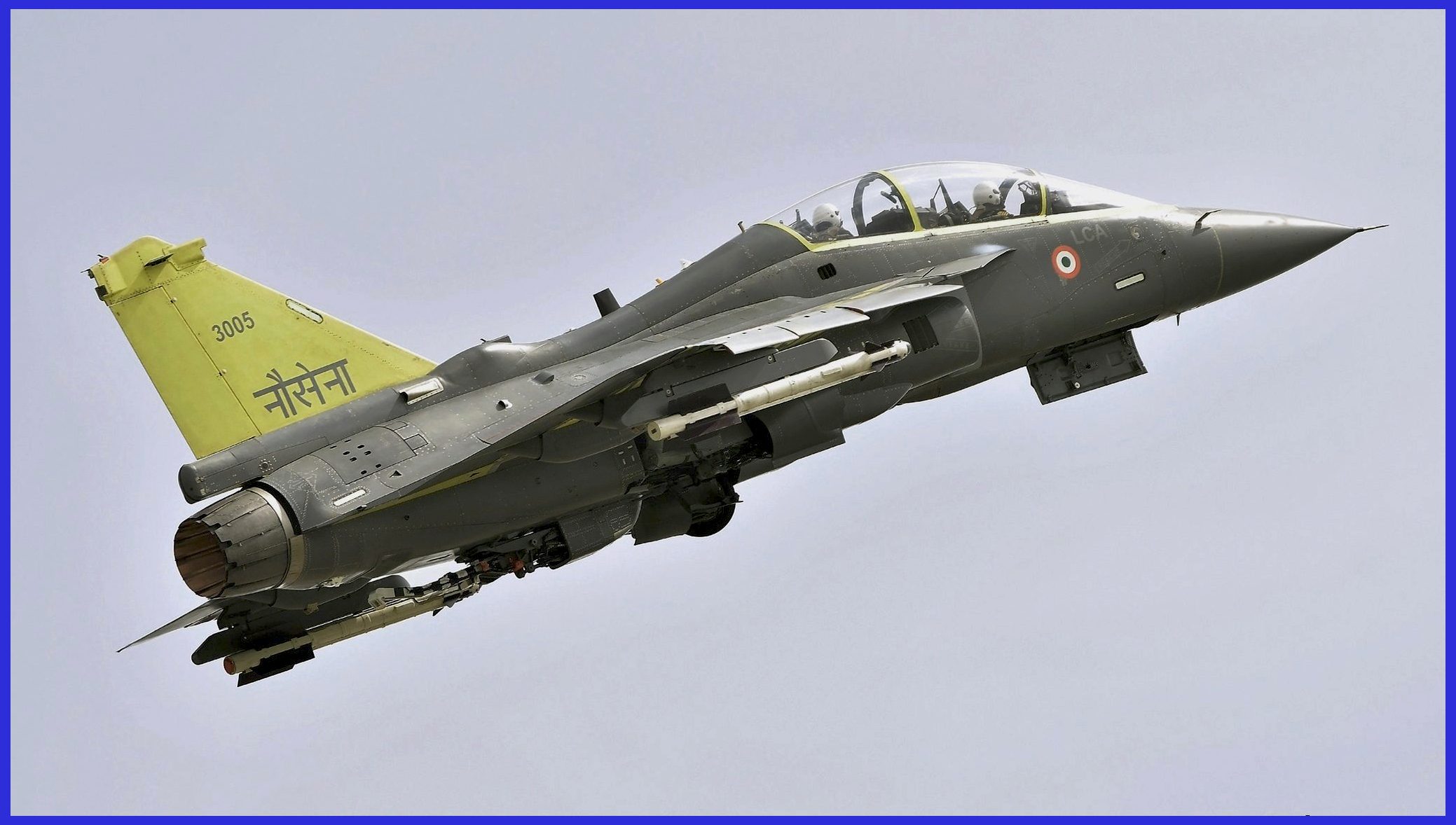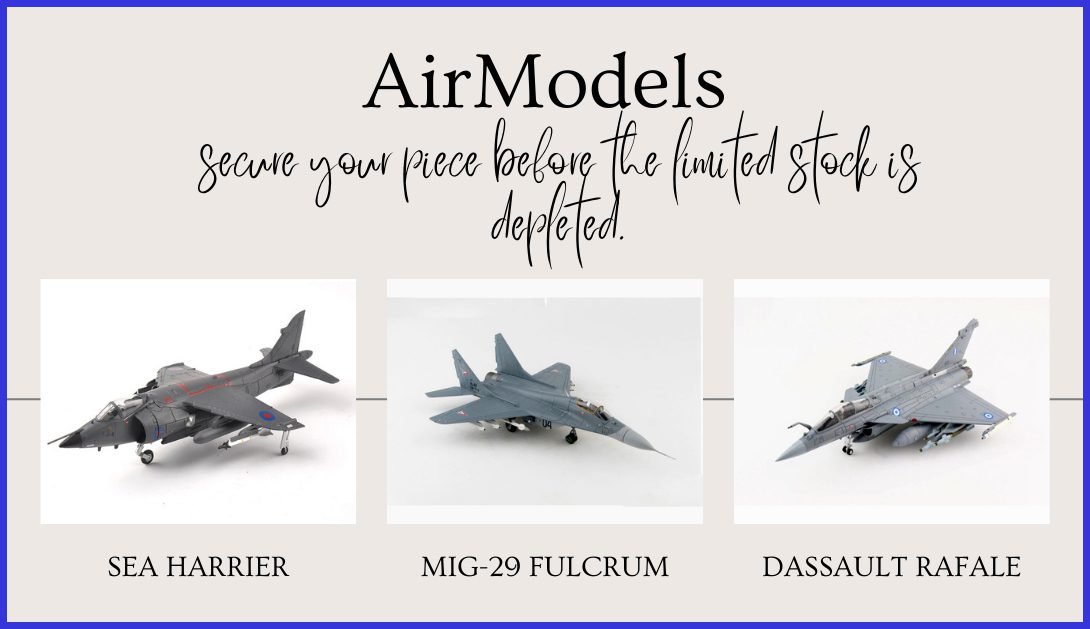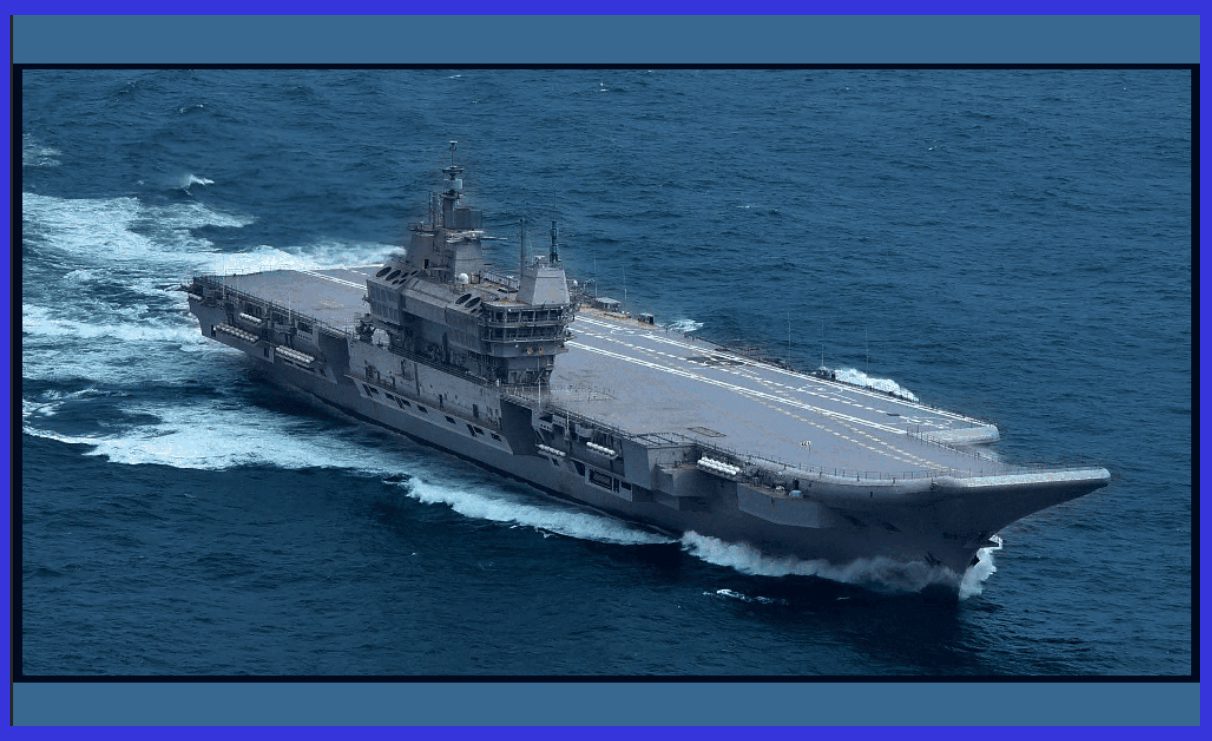The inaugural indigenous aircraft carrier stands as a testament to India’s technological prowess. Discover the Best of the 2022 Commissioned INS Vikrant. Constructed by Cochin Shipyard Limited (CSL) in Kerala, this aircraft carrier boasts a displacement of approximately 45,000 tons and spans a length of 262 meters.

The Vikrant is a formidable vessel crafted for air superiority and maritime operations, showcasing an angled flight deck that accommodates an array of fixed-wing aircraft and naval helicopters in its expansive 12,500 m2 flight deck.
Featuring cutting-edge aviation facilities, the carrier utilizes a Short Take-Off But Arrested Recovery (STOBAR) configuration to ensure efficient aircraft launch and recovery. The INS Vikrant, equipped with contemporary radar systems and air defence capabilities, assumes a crucial role in strengthening India’s maritime security and bolstering its power projection capabilities in the Indian Ocean region. This positions it as a cornerstone within the nation’s naval fleet. The warship proudly adopts the motto, “I Defeat Those Who Fight Against Me.”

Context of the Indigenous Aircraft Carrier (IAC) – Vikrant
As part of Project 71 Air Defence Ship (ADS), Defence Minister George Fernandes approved the design and construction of the aircraft carrier INS Vikrant in 1999. A 32,000-tonne STOBAR (Short Take-Off But Arrested Recovery) design with a prominent ski jump was depicted in a graphic illustration published by Cochin Shipyard Limited (CSL) in 2001.
In January 2003, the government formally approved the aircraft carrier project. By then, the Mikoyan MiG-29K was being considered for Navy acquisition, and design upgrades called for a 37,500-ton carrier to operate the aircraft type. The ship’s classification was changed from Air Defence Ship (ADS) to Indigenous Aircraft Carrier (IAC) in August 2006, according to Chief of the Naval Staff Admiral Arun Prakash.

The carrier’s displacement grew from 37,500 tonnes to over 45,000 tonnes in 2011 due to final design adjustments. To accommodate more than 30 aircraft, including fixed and rotary wings, the ship’s length was extended from 252 metres (827 feet) to 262 metres (860 feet).
Most of the ship construction activities have been completed, and the vessel has now entered the trials phase. The readiness of the ship’s propulsion and power generation equipment/systems underwent testing in the harbour during the Basin Trials in November 2020. The progress of the carrier’s construction was thoroughly reviewed by Raksha Mantri during his visit to the ship on June 25, 2021.

Although the commencement of Sea Trials faced delays due to the second wave of COVID, the collective and dedicated efforts of numerous workers, Original Equipment Manufacturers (OEMs), engineers, overseers, inspectors, designers, and the ship’s crew have been instrumental in ensuring the ship’s readiness for sea trials.
With the delivery of IAC, India would join a select group of nations with the capability to indigenously design and build an aircraft carrier, which will be a real testimony to the ‘ Make In India ‘ thrust of the Indian Government.

The indigenous construction of the carrier serves as a shining example of the nation’s pursuit of ‘Atma Nirbhar Bharat’ and the ‘Make in India Initiative.’ This accomplishment has not only enhanced indigenous design and construction capabilities but has also fostered the growth of numerous ancillary industries, creating employment opportunities for approximately 2,000 CSL personnel and around 12,000 employees in associated sectors.
On August 8, 2021, the IAC ‘Vikrant’ completed its maiden sea voyage, having sailed from Kochi on August 4, 2021. The trials progressed as planned, and the system parameters proved satisfactory. The carrier will continue to undergo a series of sea trials to validate all equipment and systems before being handed over to the Indian Navy.

Commissioning Ceremony of INS Vikrant
INS Vikrant was transferred to the Indian Navy on July 28, 2022. Following this, Prime Minister Narendra Modi officiated the commissioning of INS (Indian Naval Ship) Vikrant on September 2, 2022, in a grand ceremony held at Cochin Shipyard. A significant milestone occurred in February 2023, as the naval variant of the Tejas, a fixed-wing fighter aircraft type, successfully executed the first-ever launch from and recovery onto the aircraft carrier Vikrant.

This accomplishment underscores the Tejas naval variant’s capability to operate effectively from an aircraft carrier, representing a notable advancement in naval aviation. The completion of flight trials for its aircraft complement was expected by the end of 2023, indicating the ship’s full operational status.
Presently, the carrier is equipped with Russian MiG-29K and other rotary-wing aircraft as of 2024, until the French Dassault Rafale-M came into existence. It is expected that during the next upcoming visit of the French president on January 26, 2024, the Rafale deal will be finalized. Following that, the induction of this mighty jet can be expected in 2029.

Design Overview of INS Vikrant
INS Vikrant stands as a significant milestone for India, marking the inaugural indigenous design and construction of an aircraft carrier. The Warship Design Bureau of the Indian Navy conceptualized its design, and it holds the distinction of being the initial warship crafted by Cochin Shipyard. The construction process witnessed collaboration from numerous private and public enterprises.
- Displacement and Dimensions: INS Vikrant possesses a displacement of approximately 45,000 tons. The Indigenous Aircraft Carrier spans 262 meters in length, with a width of 62 meters at its broadest section, and stands at a height of 59 meters, inclusive of the superstructure.
- Flight Deck: The vessel encompasses a total of 14 decks, incorporating 5 within the superstructure. Featuring over 2,300 compartments, it is structured to accommodate a crew of approximately 1,700 individuals, with specialized cabins designated for women officers.

- Propulsion: Four General Electric LM2500+ gas turbines mounted on two shafts provide over 80 megawatts (110,000 horsepower) of power to propel INS Vikrant. The carriers’ two gearboxes were designed and provided by Elecon Engineering (COGAG Gearbox). Vikrant is outfitted with a high degree of automation for survivability, ship navigation, and mechanical operation. It can reach a top speed of about thirty knots, cruise at eighteen knots, and cover a distance of roughly eight thousand nautical miles.
- Anti-Aircraft Defenses: The carrier is outfitted with AK-630 close-in weapon systems (CIWS) to provide point defence against anti-ship missiles and aircraft. The CIWS can consist of guns or missile systems. The ship’s weaponry includes Barak-8 surface-to-air missiles and four Otobreda 76mm dual-purpose cannons. Additionally, it features anti-submarine warfare capabilities, incorporating a towed array of sonar and torpedo tubes. The vessel is also equipped with a modern communication and sensor suite, encompassing long-range surveillance radar and electronic warfare systems.

- Sensors and Systems: Advanced radar systems and sensor suites are seamlessly integrated to ensure comprehensive situational awareness. The Combat Management System (CMS) of the ship, developed by Tata Advanced Systems, stands as the pioneering CMS crafted by a private company specifically for the Indian Navy. This groundbreaking system was officially transferred to the Navy on March 28, 2019. In totality, the carrier is furnished with state-of-the-art communication systems and electronic warfare capabilities.
- Aircraft: INS Vikrant is designed to carry a diverse array of fixed-wing aircraft and helicopters, utilizing a STOBAR configuration. The carrier incorporates a ski-jump ramp at the bow, facilitating the takeoff of fighter jets without a catapult system. With a hangar deck accommodating up to 36 aircraft, including 26 fixed-wing combat aircraft and rotor wings, and a flight deck accommodating 14 aircraft simultaneously, the ship’s design is versatile. It is equipped with elevators for aircraft transportation between decks.
It presently operates MiG-29K fighters and various naval helicopters, including a mix of Dhruv MK-III (mainly used for search and rescue operations), Sikorsky MH-60R (providing anti-surface and anti-submarine warfare (ASW) capabilities), and Kamov Ka-31 helicopters (fulfilling the airborne early warning (AEW) role).

Alongside this article, seize the exclusive opportunity to acquire the exquisite large-scale 1/72 premium die-cast models of the formidable BAe Sea Harrier FRS MK I, Mikoyan MIG-29A Fulcrum, and Dassault Rafale. These remarkable and iconic naval military jets have an impeccable track record with the Indian Defence and are now available for purchase on AirModels with worldwide delivery. Click here now to secure your piece before the limited stock is depleted.

INS Vikrant (2013) Specifications
- It is a STOBAR ( short take-off but arrested recovery ) aircraft carrier
- Displacement: 45,000 Tonnes
- Aviation facilities: 12,500 m2 flight deck
- Built: Ordered_ 2004, Laid Down_ 28 Feb. 2009, Launched_ 12 Aug. 2013, Acquired_ 28 July 2022, Commissioned_ 2 Sep. 2022
- Length: 262 m ( 860 ft )
- Beam: 62 m ( 203 ft )
- Height: 59 m ( 194 ft )
- Flight Deck: Total of 14 Decks
- Sensors: Elta EL/M-2248 MF Star AESA Multifunction Radar
- Armament: 2 x 32 Cell VLS Barak 8 SAM ( range of 0.5-100 km ), 4 x Otobreda 76 mm cannons, 4 x AK-630 CIWS ( close-in weapon system )
- Machinery: 4 x General Electric LM2500 Gas Turbine ( 88 MW ) and 2 x Elecon COGAS Gearbox
- Max Speed: 30 Kn ( 56 Km/h; 35 mph )
- Range: 8,000 nmi ( 15,000 km; 9,200 mi )
- Complement: About 1,700 men ( including 196 Officers )
- Aircraft: A total of 36 aircraft, including fixed-wing aircraft such as MiG-29K and LCA Tejas Navy version, as well as rotary-wing aircraft like Kamov Ka-31, MH-60R, and HAL Dhruv, are presently operating from this carrier as of March 2024. HAL Prachand will also be operational shortly; currently, trials are being carried out.

In conclusion, INS Vikrant stands as a modern and formidable aircraft carrier, signifying a significant accomplishment for the Indian Navy and the country’s shipbuilding industry. Crafted and constructed in India, the vessel incorporates advanced technologies and capabilities that will augment the Navy’s maritime strength, bolstering India’s naval influence in the South-East region.
With its advanced weaponry, contemporary communication and sensor suite, and the capacity to accommodate fighter jets and helicopters, INS Vikrant emerges as a versatile platform capable of supporting diverse missions and operations. Consequently, it assumes a pivotal role in the Indian Navy, ensuring maritime security for India and fostering stability and prosperity in the region.
In its entirety, INS Vikrant serves as a symbol of India’s burgeoning military and technological prowess, exemplifying its commitment to being Atma Nirbhar Bharat (self-reliant India) and maintaining a robust and capable naval force. Thus, it marks a crucial milestone in India’s journey towards realizing its strategic goals and aspirations as a formidable regional and global power.

Important Announcement for Our Valued Readers!
After an article is published, it is possible that updates or changes may have occurred beyond the time of publication. Therefore, it is important to be aware that certain information in the article might be outdated. To ensure the most accurate analysis, it is highly recommended to verify the content with the latest sources available.
However, we are dedicated to delivering outstanding articles on military products and global updates. Maintaining quality and smooth operation requires resources. Your support sustains our efforts in providing insightful content. By purchasing high-quality products through our affiliated links, you help us keep our platform alive and acquire top-notch items. Your unwavering support is invaluable and inspires us to strive further.
We welcome your suggestions and requests for more information, as we value feedback from our readers. If there’s specific defence material or equipment not covered on our site, please share your request in the comments. We’ll strive to research and provide the required information. We sincerely thank you for your unwavering interest in our website, and we eagerly anticipate hearing from you! Enjoy your reading experience!
